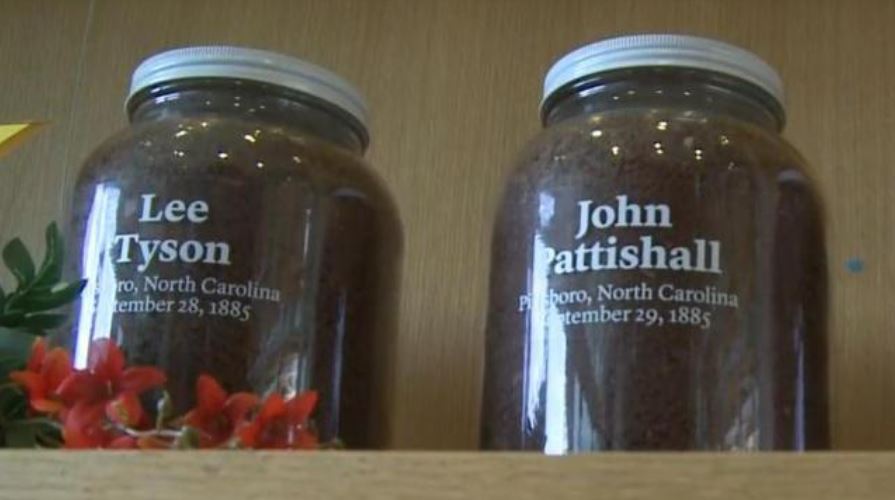Chatham County group creates soil memorial to honor Black Americans killed by lynch mobs in post Civil War era

Chatham County records show that at least six people were victims of lynching from the post-Civil War era to 1950. Their names and dates of their death are labeled on jars filled with soil collected from where the lynchings took place.
By Rick Armstrong
Click here for updates on this story
Chatham County, North Carolina (WRAL) — A new library display in Chatham County shines a light on the dark history of lynching in North Carolina. These were mob-led murders of black people accused of crimes but never tried, occurring from 1885 to 1950.
Their stories are now told with the soil close to where they were slain. To get to one location, you have to climb a steep hill next to Lake Jordan. What took place there represents a tragic era in North Carolina.
“We came to this area to collect soil for Eugene Daniels,” said Mary Nettles with the Community Remembrance Coalition of Chatham County or the CCRC-C.
Eugene Daniels was lynched in 1921 in an area now underwater.
Mary Nettles and others collected soil as a memorial for six Black Americans who were killed by white mobs long ago.
CCRC-C member Raeford Bland grew up near where Eugene Daniel was slain.
“We knew the people went to the jail. People got this person taken down this way,” said Bland, pointing in the direction where Daniel suffered lynching.
It was Bland’s father who brought him to the spot near where it all happened when Bland was about 8 years old.
Bland said, “My father gestured up here and said, ‘They hung a Black man up there in a tree.’”
Chatham County records show that at least six people were victims of lynching from the post-Civil War era to 1950. Their names and dates of their death are labeled on the jar filled with soil collected from where lynchings took place.
They include the names of Eugene Daniel, Lee Tyson, John Pattishall, and Jerry Finch along with his wife Harriet were all killed at about the same time in September 1885. Also memorialized was Henry Jones of Bear Creek who was killed in 1899.
They’re now on display at the Chatham County Library.
“It’s very powerful. It’s very moving,” said Chatham County Librarian Rita Van Duinen. “It literally took my breath away. It really hit home.”
The jars and and a series of recommended books in the entry-way of the library draws attention from visitors who may check out the books.
Nettles says their effort began in 2018 to increase awareness.
“We’re trying to correct the wrong,” Nettles said. “That’s what the community remembers coalition-Chatham stands for: Truth, Justice and Reconciliation.”
The “Equal Justice Initiative” reports that at least 120 lynchings have been documented across North Carolina to the year 1950.
Please note: This content carries a strict local market embargo. If you share the same market as the contributor of this article, you may not use it on any platform.